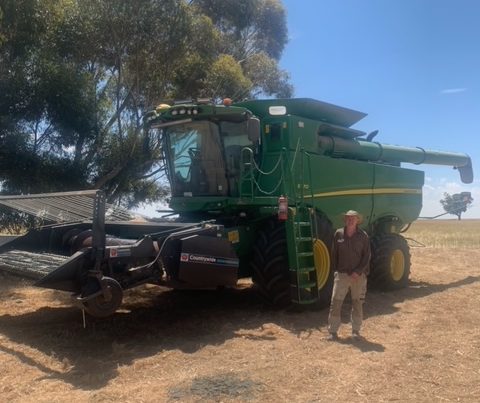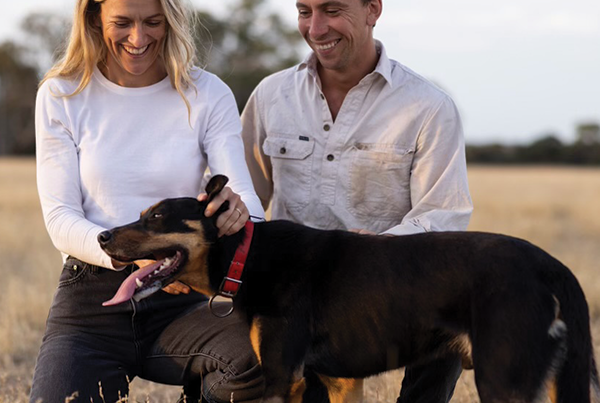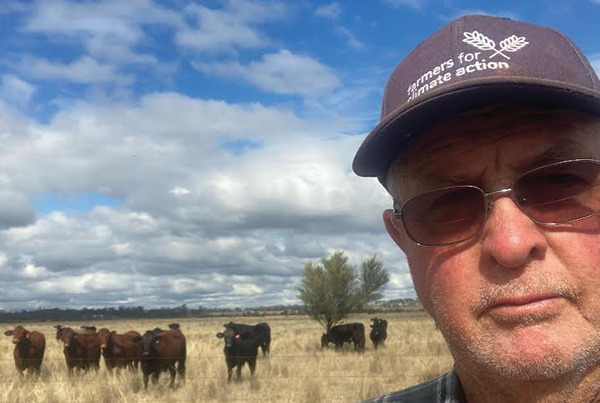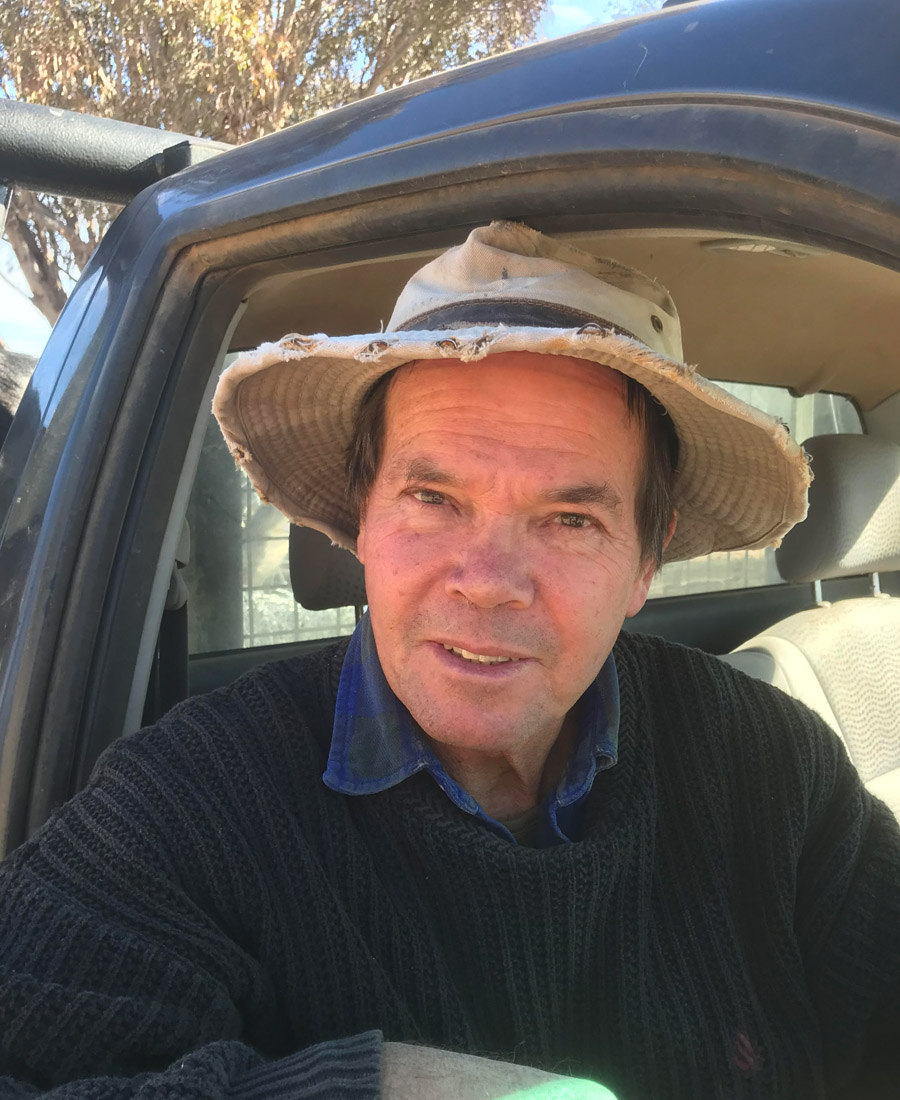
In order to celebrate the amazing work underway on farms across Australia, we are selecting a farmer doing great things on-farm to profile and learn from.
This month our Climate-Smart Farmer is Rob Lee, a sheep and beef producer in central west NSW. Rob and his family have changed the structure of their farm business to better manage increased climate-volatility.
At a glance
Who: Rob Lee
What: “Coorah” is a 1630 hectare grazing property currently running 120 Angus shorthorn cows and 3000 Merino ewes which are joined to White Suffolk rams
Where: 10 km east of Cumnock in central west NSW
Can you tell us about your property?
I run Coorah with my wife Kim and my son Lachlan and his wife Diamond. Long term profit has been our primary objective for the past 23 years that Kim and I have been managing. We are consistently above average profitability in the Holmes Sackett benchmarking over that period. However long term is the critical part of that goal, making care and regeneration of the farm a critical priority. So far this year our region has had two thirds of its average rainfall on top of failed seasons in 2017 and 2018. As a result we’re running half the cattle we would traditionally, and fewer Merino ewes.
What first got you thinking about climate change?
The realisation that the climate was changing came on slowly through the naughties as we had a succession of 1-in-100-year droughts. I read Tim Flannery’s “The Weather Makers” at that time while on an aeroplane to England to see my son. It was the first time I’d travelled overseas and perhaps it was something about being out of my normal routine but it really struck home to me. That said, I’ve never had trouble accepting the science, maybe because I’ve been trained in agricultural science. Since then I’ve read many research articles from credible institutions and tried to keep up.
How has climate change impacted on your farm business?
The immediate and obvious impacts are the high evaporation rate and the heatwaves we’ve been getting, which have exacerbated the erratic rainfalls we’ve been having. The last three winter rainfalls have been nearly half of what we’d expect, and the evaporation and heat has exacerbated that making the ground very dry. Keeping water up to livestock has become a big issue.
What are some of the climate-smart strategies you’ve been employing and how successful have they been?
To better manage the volatility in climate, we have changed our enterprise structure. We are now much more flexible and more ruthless about destocking when the season dictates and aggressive about restocking when we think we can. I’ve reduced my permanent stocking rate so I can trade in if the season allows and I can readily trade out when the season deteriorates. Last year we sold down heavily and as a result, following summer rain we were able to buy ewes in over summer. We are now selling pregnant cows and feeder steers and heifers because the season has deteriorated so badly. We have to be more nimble than what we used to be.
We’ve spent over $100,000 reticulating water across the farm to do away with surface livestock water supplies. I acknowledge the state’s farm innovation fund for supporting that too – that’s been of great assistance. Much of the investment for this has gone into subdividing paddocks into smaller areas and combining mobs into larger groups. That’s linked to our efforts to change our grazing management. We’re trying to adopt some of the holistic management processes whereby we’re resting our pastures for significant periods and grazing them very heavily for very short periods in an attempt to encourage them to establish strong root systems. I feel confident that what we’re doing is successful.
For the last 20 years we’ve also been planting trees into biodiversity blocks through Landcare. The main reason is for biodiversity encouragement but it also means we have more trees for shelter and carbon storage. If it eventuates that we do have to pay a carbon tax for our cattle hopefully my credit for tree planting and increased soil carbon will offset emissions from my cattle and sheep.
I’m on the organising committee for the Risks and Rewards in a Changing Climate conference being held in Orange on 10 September and I’m looking forward to finding out more about how climate change is developing and also what I can do here on the farm. I’m developing an interest in regenerative farming, especially since my son came home on the farm full-time two years’ ago. He is very interested in preserving the landscape. I’m also excited to find out about some of the technological solutions now under development. Change should not be seen as bad or scary: the industrial revolution saw the western world transform itself and our quality of life improved as a result – I think we can do that again now.
While I’m doing what I can on on-farm, I’m also very keen to see the Australian government step up and lead the global effort on climate change. Our economy has been built on cheap energy – we’re now realising that was not the true price. If we aren’t prepared to act, then how can we expect big emitters like China and India to do so. With Pacific Island countries like Kiribati already going under, it’s clear this issue is so much bigger than a few percentage points off our GDP growth over the next 30 years.


